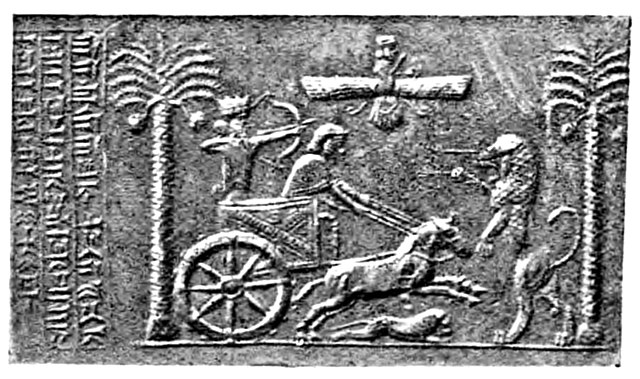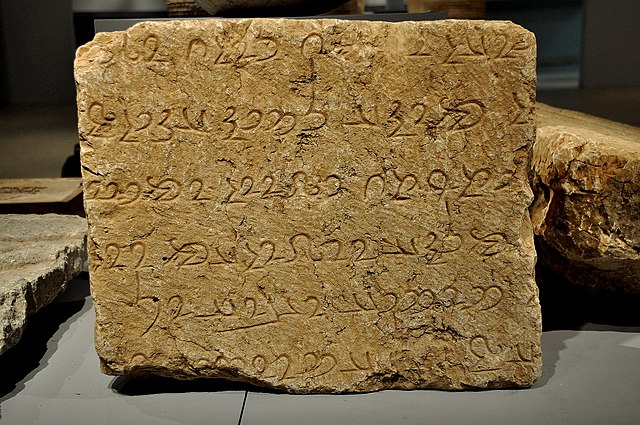Persis, also called Persia proper, is the Fars region, located in southwest Iran, now a province. The Persians are thought to have initially migrated either from Central Asia or, more probably, from the north through the Caucasus. They would then have migrated to the current region of Persis in the early 1st millennium BC.
Seal of Darius the Great hunting in a chariot, reading "I am Darius, the Great King" in Old Persian (𐎠𐎭𐎶𐏐𐎭𐎠𐎼𐎹𐎺𐎢𐏁𐎴 𐏋, "adam Dārayavaʰuš xšāyaθiya"), as well as in Elamite and Babylonian. British Museum.
Frataraka dynasty ruler Vadfradad I (Autophradates I). 3rd century BC. Istakhr (Persepolis) mint.
Dārēv I (Darios I) used for the first time the title of mlk (King). 2nd century BC.
A Sassanid relief showing the investiture of Ardashir I
Persian, also known by its endonym Farsi or Parsi, is a Western Iranian language belonging to the Iranian branch of the Indo-Iranian subdivision of the Indo-European languages. Persian is a pluricentric language predominantly spoken and used officially within Iran, Afghanistan, and Tajikistan in three mutually intelligible standard varieties, respectively Iranian Persian, Dari Persian, and Tajiki Persian. It is also spoken natively in the Tajik variety by a significant population within Uzbekistan, as well as within other regions with a Persianate history in the cultural sphere of Greater Iran. It is written officially within Iran and Afghanistan in the Persian alphabet, a derivative of the Arabic script, and within Tajikistan in the Tajik alphabet, a derivative of the Cyrillic script.
An Old Persian inscription written in Old Persian cuneiform in Persepolis, Iran
Middle Persian text written in Inscriptional Pahlavi on the Paikuli inscription from between 293 and 297. Slemani Museum, Iraqi Kurdistan.
Ferdowsi's Shahnameh
Kalilah va Dimna, an influential work in Persian literature








